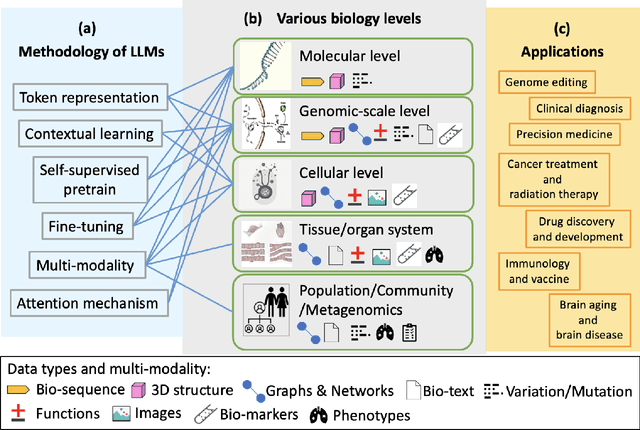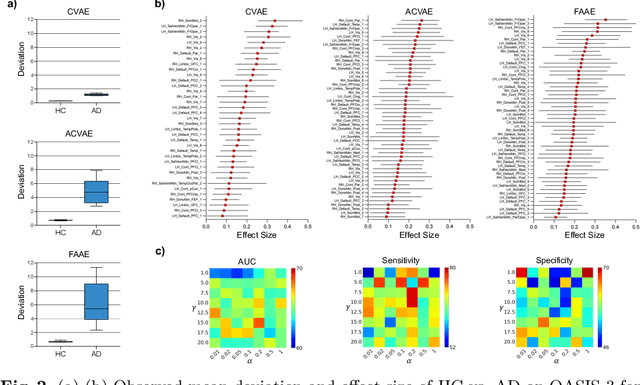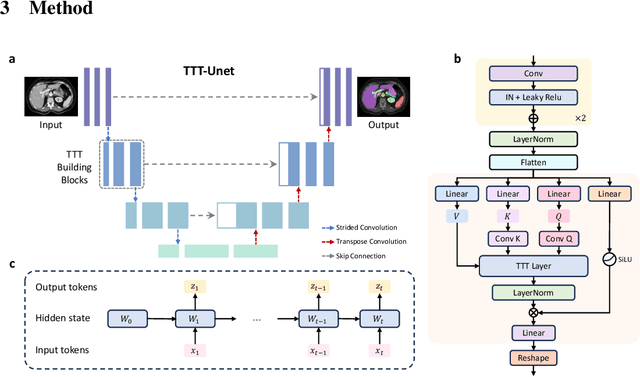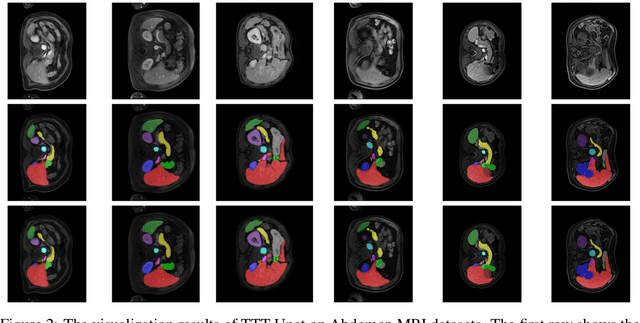Lifang He
Lehigh University
A Survey on Post-training of Large Language Models
Mar 08, 2025Abstract:The emergence of Large Language Models (LLMs) has fundamentally transformed natural language processing, making them indispensable across domains ranging from conversational systems to scientific exploration. However, their pre-trained architectures often reveal limitations in specialized contexts, including restricted reasoning capacities, ethical uncertainties, and suboptimal domain-specific performance. These challenges necessitate advanced post-training language models (PoLMs) to address these shortcomings, such as OpenAI-o1/o3 and DeepSeek-R1 (collectively known as Large Reasoning Models, or LRMs). This paper presents the first comprehensive survey of PoLMs, systematically tracing their evolution across five core paradigms: Fine-tuning, which enhances task-specific accuracy; Alignment, which ensures alignment with human preferences; Reasoning, which advances multi-step inference despite challenges in reward design; Efficiency, which optimizes resource utilization amidst increasing complexity; and Integration and Adaptation, which extend capabilities across diverse modalities while addressing coherence issues. Charting progress from ChatGPT's foundational alignment strategies to DeepSeek-R1's innovative reasoning advancements, we illustrate how PoLMs leverage datasets to mitigate biases, deepen reasoning capabilities, and enhance domain adaptability. Our contributions include a pioneering synthesis of PoLM evolution, a structured taxonomy categorizing techniques and datasets, and a strategic agenda emphasizing the role of LRMs in improving reasoning proficiency and domain flexibility. As the first survey of its scope, this work consolidates recent PoLM advancements and establishes a rigorous intellectual framework for future research, fostering the development of LLMs that excel in precision, ethical robustness, and versatility across scientific and societal applications.
End-to-End Deep Learning for Structural Brain Imaging: A Unified Framework
Feb 23, 2025Abstract:Brain imaging analysis is fundamental in neuroscience, providing valuable insights into brain structure and function. Traditional workflows follow a sequential pipeline-brain extraction, registration, segmentation, parcellation, network generation, and classification-treating each step as an independent task. These methods rely heavily on task-specific training data and expert intervention to correct intermediate errors, making them particularly burdensome for high-dimensional neuroimaging data, where annotations and quality control are costly and time-consuming. We introduce UniBrain, a unified end-to-end framework that integrates all processing steps into a single optimization process, allowing tasks to interact and refine each other. Unlike traditional approaches that require extensive task-specific annotations, UniBrain operates with minimal supervision, leveraging only low-cost labels (i.e., classification and extraction) and a single labeled atlas. By jointly optimizing extraction, registration, segmentation, parcellation, network generation, and classification, UniBrain enhances both accuracy and computational efficiency while significantly reducing annotation effort. Experimental results demonstrate its superiority over existing methods across multiple tasks, offering a more scalable and reliable solution for neuroimaging analysis. Our code and data can be found at https://github.com/Anonymous7852/UniBrain
Rethinking Functional Brain Connectome Analysis: Do Graph Deep Learning Models Help?
Jan 28, 2025Abstract:Functional brain connectome is crucial for deciphering the neural mechanisms underlying cognitive functions and neurological disorders. Graph deep learning models have recently gained tremendous popularity in this field. However, their actual effectiveness in modeling the brain connectome remains unclear. In this study, we re-examine graph deep learning models based on four large-scale neuroimaging studies encompassing diverse cognitive and clinical outcomes. Surprisingly, we find that the message aggregation mechanism, a hallmark of graph deep learning models, does not help with predictive performance as typically assumed, but rather consistently degrades it. To address this issue, we propose a hybrid model combining a linear model with a graph attention network through dual pathways, achieving robust predictions and enhanced interpretability by revealing both localized and global neural connectivity patterns. Our findings urge caution in adopting complex deep learning models for functional brain connectome analysis, emphasizing the need for rigorous experimental designs to establish tangible performance gains and perhaps more importantly, to pursue improvements in model interpretability.
Large Language Models for Bioinformatics
Jan 10, 2025
Abstract:With the rapid advancements in large language model (LLM) technology and the emergence of bioinformatics-specific language models (BioLMs), there is a growing need for a comprehensive analysis of the current landscape, computational characteristics, and diverse applications. This survey aims to address this need by providing a thorough review of BioLMs, focusing on their evolution, classification, and distinguishing features, alongside a detailed examination of training methodologies, datasets, and evaluation frameworks. We explore the wide-ranging applications of BioLMs in critical areas such as disease diagnosis, drug discovery, and vaccine development, highlighting their impact and transformative potential in bioinformatics. We identify key challenges and limitations inherent in BioLMs, including data privacy and security concerns, interpretability issues, biases in training data and model outputs, and domain adaptation complexities. Finally, we highlight emerging trends and future directions, offering valuable insights to guide researchers and clinicians toward advancing BioLMs for increasingly sophisticated biological and clinical applications.
Political-LLM: Large Language Models in Political Science
Dec 09, 2024



Abstract:In recent years, large language models (LLMs) have been widely adopted in political science tasks such as election prediction, sentiment analysis, policy impact assessment, and misinformation detection. Meanwhile, the need to systematically understand how LLMs can further revolutionize the field also becomes urgent. In this work, we--a multidisciplinary team of researchers spanning computer science and political science--present the first principled framework termed Political-LLM to advance the comprehensive understanding of integrating LLMs into computational political science. Specifically, we first introduce a fundamental taxonomy classifying the existing explorations into two perspectives: political science and computational methodologies. In particular, from the political science perspective, we highlight the role of LLMs in automating predictive and generative tasks, simulating behavior dynamics, and improving causal inference through tools like counterfactual generation; from a computational perspective, we introduce advancements in data preparation, fine-tuning, and evaluation methods for LLMs that are tailored to political contexts. We identify key challenges and future directions, emphasizing the development of domain-specific datasets, addressing issues of bias and fairness, incorporating human expertise, and redefining evaluation criteria to align with the unique requirements of computational political science. Political-LLM seeks to serve as a guidebook for researchers to foster an informed, ethical, and impactful use of Artificial Intelligence in political science. Our online resource is available at: http://political-llm.org/.
Normative Modeling for AD Diagnosis and Biomarker Identification
Nov 15, 2024



Abstract:In this paper, we introduce a novel normative modeling approach that incorporates focal loss and adversarial autoencoders (FAAE) for Alzheimer's Disease (AD) diagnosis and biomarker identification. Our method is an end-to-end approach that embeds an adversarial focal loss discriminator within the autoencoder structure, specifically designed to effectively target and capture more complex and challenging cases. We first use the enhanced autoencoder to create a normative model based on data from healthy control (HC) individuals. We then apply this model to estimate total and regional neuroanatomical deviation in AD patients. Through extensive experiments on the OASIS-3 and ADNI datasets, our approach significantly outperforms previous state-of-the-art methods. This advancement not only streamlines the detection process but also provides a greater insight into the biomarker potential for AD. Our code can be found at \url{https://github.com/soz223/FAAE}.
Dual-Optimized Adaptive Graph Reconstruction for Multi-View Graph Clustering
Oct 30, 2024Abstract:Multi-view clustering is an important machine learning task for multi-media data, encompassing various domains such as images, videos, and texts. Moreover, with the growing abundance of graph data, the significance of multi-view graph clustering (MVGC) has become evident. Most existing methods focus on graph neural networks (GNNs) to extract information from both graph structure and feature data to learn distinguishable node representations. However, traditional GNNs are designed with the assumption of homophilous graphs, making them unsuitable for widely prevalent heterophilous graphs. Several techniques have been introduced to enhance GNNs for heterophilous graphs. While these methods partially mitigate the heterophilous graph issue, they often neglect the advantages of traditional GNNs, such as their simplicity, interpretability, and efficiency. In this paper, we propose a novel multi-view graph clustering method based on dual-optimized adaptive graph reconstruction, named DOAGC. It mainly aims to reconstruct the graph structure adapted to traditional GNNs to deal with heterophilous graph issues while maintaining the advantages of traditional GNNs. Specifically, we first develop an adaptive graph reconstruction mechanism that accounts for node correlation and original structural information. To further optimize the reconstruction graph, we design a dual optimization strategy and demonstrate the feasibility of our optimization strategy through mutual information theory. Numerous experiments demonstrate that DOAGC effectively mitigates the heterophilous graph problem.
SiMilarity-Enhanced Homophily for Multi-View Heterophilous Graph Clustering
Oct 04, 2024Abstract:With the increasing prevalence of graph-structured data, multi-view graph clustering has been widely used in various downstream applications. Existing approaches primarily rely on a unified message passing mechanism, which significantly enhances clustering performance. Nevertheless, this mechanism limits its applicability to heterophilous situations, as it is fundamentally predicated on the assumption of homophily, i.e., the connected nodes often belong to the same class. In reality, this assumption does not always hold; a moderately or even mildly homophilous graph is more common than a fully homophilous one due to inevitable heterophilous information in the graph. To address this issue, in this paper, we propose a novel SiMilarity-enhanced Homophily for Multi-view Heterophilous Graph Clustering (SMHGC) approach. By analyzing the relationship between similarity and graph homophily, we propose to enhance the homophily by introducing three similarity terms, i.e., neighbor pattern similarity, node feature similarity, and multi-view global similarity, in a label-free manner. Then, a consensus-based inter- and intra-view fusion paradigm is proposed to fuse the improved homophilous graph from different views and utilize them for clustering. The state-of-the-art experimental results on both multi-view heterophilous and homophilous datasets collectively demonstrate the strong capacity of similarity for unsupervised multi-view heterophilous graph learning. Additionally, the consistent performance across semi-synthetic datasets with varying levels of homophily serves as further evidence of SMHGC's resilience to heterophily.
TTT-Unet: Enhancing U-Net with Test-Time Training Layers for Biomedical Image Segmentation
Sep 18, 2024



Abstract:Biomedical image segmentation is crucial for accurately diagnosing and analyzing various diseases. However, Convolutional Neural Networks (CNNs) and Transformers, the most commonly used architectures for this task, struggle to effectively capture long-range dependencies due to the inherent locality of CNNs and the computational complexity of Transformers. To address this limitation, we introduce TTT-Unet, a novel framework that integrates Test-Time Training (TTT) layers into the traditional U-Net architecture for biomedical image segmentation. TTT-Unet dynamically adjusts model parameters during the testing time, enhancing the model's ability to capture both local and long-range features. We evaluate TTT-Unet on multiple medical imaging datasets, including 3D abdominal organ segmentation in CT and MR images, instrument segmentation in endoscopy images, and cell segmentation in microscopy images. The results demonstrate that TTT-Unet consistently outperforms state-of-the-art CNN-based and Transformer-based segmentation models across all tasks. The code is available at https://github.com/rongzhou7/TTT-Unet.
Biomedical SAM 2: Segment Anything in Biomedical Images and Videos
Aug 06, 2024Abstract:Medical image segmentation and video object segmentation are essential for diagnosing and analyzing diseases by identifying and measuring biological structures. Recent advances in natural domain have been driven by foundation models like the Segment Anything Model 2 (SAM 2). To explore the performance of SAM 2 in biomedical applications, we designed two evaluation pipelines for single-frame image segmentation and multi-frame video segmentation with varied prompt designs, revealing SAM 2's limitations in medical contexts. Consequently, we developed BioSAM 2, an enhanced foundation model optimized for biomedical data based on SAM 2. Our experiments show that BioSAM 2 not only surpasses the performance of existing state-of-the-art foundation models but also matches or even exceeds specialist models, demonstrating its efficacy and potential in the medical domain.
 Add to Chrome
Add to Chrome Add to Firefox
Add to Firefox Add to Edge
Add to Edge